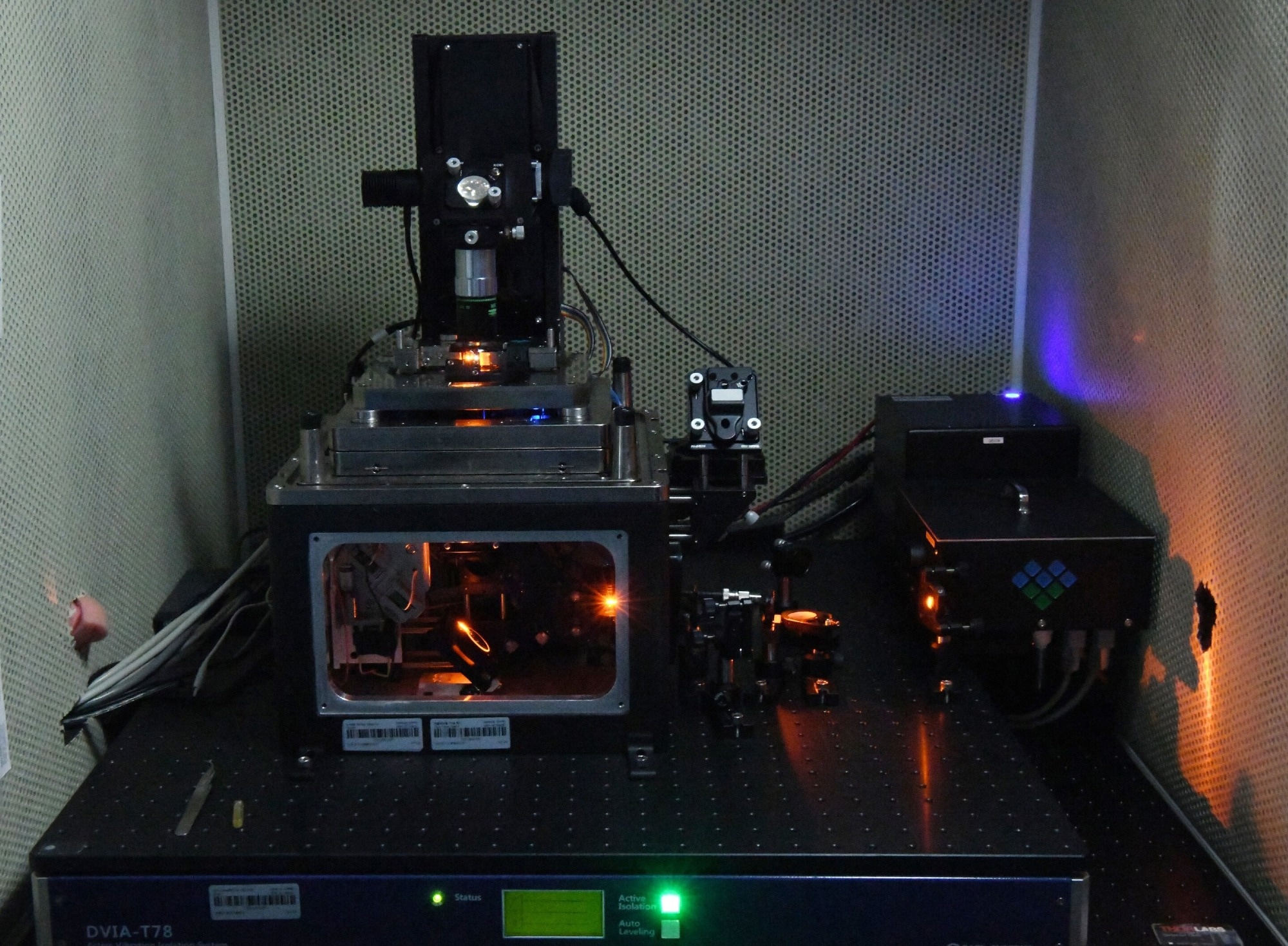A team of researchers from the Korea Research Institute of Standards and Science (KRISS) has created a hybrid nano-microscope that can measure a variety of nano-material properties simultaneously.
 Hybrid nano-microscope developed by KRISS. Image Credit: Korea Research Institute of Standards and Science (KRISS).
Hybrid nano-microscope developed by KRISS. Image Credit: Korea Research Institute of Standards and Science (KRISS).
This hybrid nano-microscope is crucial for studying the features of nanocomposite materials and is well-suited for commercialization. Its development is anticipated to advance industries related for related equipment and materials.
The newly developed microscope can integrate the capabilities of photo-induced force microscopy, atomic force microscopy, and electrostatic force microscopy. Rather than using lenses, this microscope utilizes a precise functional probe to interact with the sample, enabling the instantaneous measurement of electrical and optical properties, along with the shape of nano-materials, in a single scan.
Bilayer graphene is a typical nanomaterial that benefits from employing the hybrid nano-microscope. It holds remarkable promise for applications due to its exceptional mechanical flexibility, strength, and high thermal conductivity, surpassing those of monolayer graphene.
The bilayer graphene demonstrates diverse properties, including superconductivity, which can be influenced by the voltage applied to each layer or the twisted angle between the two layers.
Using the hybrid nano-microscope, the KRISS Material Property Metrology Group has explained the principles behind the distinctive infrared absorption response in bilayer graphene. The research team established that this phenomenon arises from the charge imbalance between the two graphene layers. Furthermore, they experimentally showed the ability to manipulate infrared absorption by deliberately inducing and modifying the charge imbalance.
Traditional nano-microscopes were limited to measuring a material’s single property at a time, making it difficult to measure and examine its composite properties. While there were instances of simultaneously measuring two properties, its commercialization was hindered by the challenging manufacturing process for such equipment.
The innovative nano-microscope created by KRISS can be readily implemented in industrial settings, as it can be made with minimal alterations to the structure of current atomic force microscopes. Consequently, the KRISS research team is the first to engineer a hybrid nano-microscope that can be marketed.
Expanding the measurement capabilities of the hybrid nano-microscope to include magnetic properties, in addition to electrical and optical properties, will enable instantaneous observation of all three properties at the nanometer scale. This advancement is poised to accelerate research on the properties of numerous nano-composite materials, including quantum materials, thereby aiding in the advancement of nanomaterials, equipment, and components.
Another advantage of this novel technology is its capability to trigger localized changes in the properties. By employing the microscopic probe to scratch the sample surface and modifying the amount of applied electrons, it becomes feasible to simultaneously regulate the electrical and optical properties of the component, akin to a switch. This feature can be valuable for designing circuits and advanced devices that leverage composite properties.
This achievement is the culmination of our research experience in nano-measurement since 2015. We hope to secure a leading position in the research on new materials by developing nano-measurement technology for composite properties.
Dr. Eun Seong Lee, Principal Researcher, Material Property Metrology Group, Korea Research Institute of Standards and Science
Journal Reference:
Jahng, J., et al. (2024) Characterizing and controlling infrared phonon anomaly of bilayer graphene in optical-electrical force nanoscopy. Light: Science & Applications. doi: 10.1038/s41377-023-01320-1